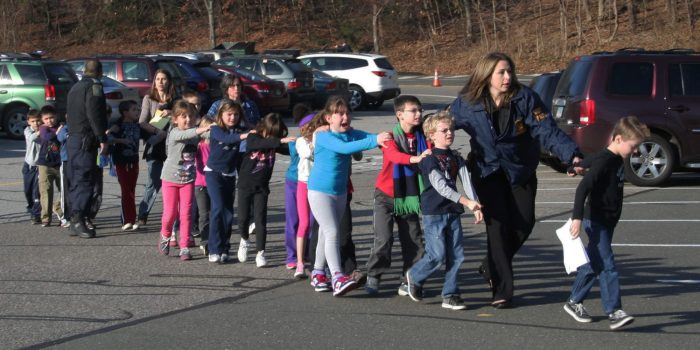Reflections on the 2013 Boston Marathon Tragedy
There are few races more sacred in the running community than the Boston Marathon. It is the crown jewel of races – known for it’s elite runners and fast field. I will probably never qualify for Boston. But as a runner, I still love the hype and excitement of the Boston Marathon. So last year, […]
There are few races more sacred in the running community than the Boston Marathon. It is the crown jewel of races – known for it’s elite runners and fast field. I will probably never qualify for Boston. But as a runner, I still love the hype and excitement of the Boston Marathon.
So last year, I did what thousands of other runners did – I woke up on April 15 and tweeted goodwill to those who were setting feet to Boston pavement, a couple of whom were personal friends.
“Good luck to the runners hitting the streets of Boston! Kick some a$$phalt! #BostonMarathon.”
I made sure I was streaming the early coverage, and watched the elite women’s group cross the finish line, marveling how at the end of a marathon, Rita Jeptoo still had the incredible strength to pull ahead of the lead pack for the win. And then I closed my computer and went about my workday, interrupted a few hours later by the news that two bombs had stopped the race, killing three people and injuring 264 others. Fourteen people lost limbs. It is estimated that the two explosions caused more than $330 million in damage to the local economy through lost wages, retail sales, and infrastructure damage.
My heart stopped. Bombs at a race are usually the last thing a runner considers – running is a sport that encompasses everyone, regardless of their gender, ethnicity, beliefs, or even body type. I instantly pulled up my friends’ social media accounts to see if they were OK. And then I mentally flashed through some of the big races I’d run. The Army Ten-Miler – twice, once with my sister and brother-in-law – in a field of 30,000. I thought of how many races both of my sons had been present at as I crossed the finish line. I had never, up until that point, started a race and thought, “I wonder if they secured the course and are scanning for bombs during the race.”
Today (April 21), 36,000 runners will hit the streets of Boston. They will pause to remember the events that marred last year’s race (incidentally, the 2013 race began with 26 seconds of silence to honor the Sandy Hook shooting victims). And then they will run their hearts out and leave it all on the pavement.
The Boston Marathon bombings, and similar tragedies, aren’t the usual kind of disaster that we respond to at the Center for Disaster Philanthropy. But there are two important themes contained in the response to the race-day explosions that we should never forget in any disaster.
The first lesson is to find your niche in the philanthropy world and know where to apply your funds. Following any disaster or tragedy, the initial outpouring of monetary support is huge. Boston was no different. One Fund, set up the next day for Boston victims, collected $61 million in the 90 days following the explosions.That money was rapidly disbursed to survivors and families. But what are the unmet, long-term needs? The ones falling through the cracks? The One Fund continues to accept and solicit donations, and its board of directors and community council will meet soon to determine the most pressing secondary and follow-up needs and determine another round of assistance. It’s important to give, especially when the need is great, and it takes on an even bigger meaning when the need is close to your particular interests or personal wheelhouse. For me, a tragedy impacting the running community hit close to my heart, as it did for many companies and organizations, large and small. I’m also a big believer in the power of sports to provide mental health and healing following a catastrophic event – and I follow the organizations that provide those opportunities. What means the most to you? Find your niche and then research the best way to give (or better, yet, have CDP do your research for you!).
The second lesson is that personal preparation is important.The truth is, no one knows what he or she might face on any given day. But that stops none of us from being prepared. Do you know the closest emergency shelter? Do you carry an emergency kit in your vehicle and store one in your home? Do your children know the family disaster plan – who to call and where to go if they are separated from you? The moment when the explosion happens is not the time to hope those decisions have been made. Being prepared also means that communities should look at building the best structures to withstand disasters, establish important emergency protocols, and determine recovery processes if the worst happens. Preparation measures feed the resilience of people and community.
The runners of the 2014 Boston Marathon, at some point, or perhaps many points in the race, will have the events of last year cross their minds. I promise you, they will keep going. Marathoners know all about fortitude and resilience. In disasters and tragedies alike, resilience can mean a hundred things: buildings made to withstand impact; families with a plan; the indomitable human spirit that pulls together with others to beat the odds. And today, there is no better single-frame picture encompassing all those things than any one of the 36,000 runners crossing Boston’s finish line.
Sources/related posts:
Financial costs
One Fund
Boston Survivor photo project
Resilience
More like this
Boston bombings show Americans’ generosity; opportunity for wise investments
